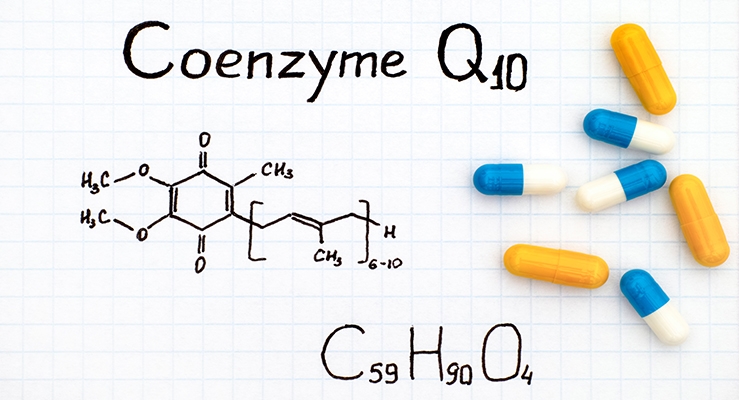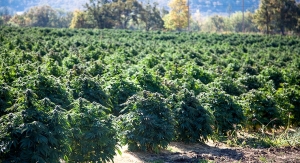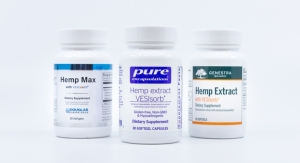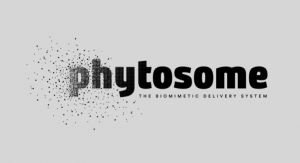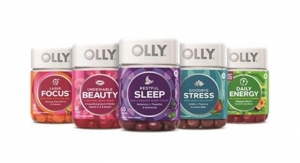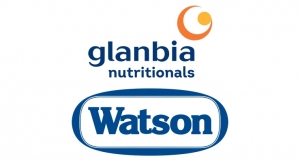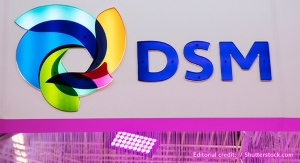07.25.19
Coenzyme Q10 (CoQ10), a potent vitamin-like antioxidant has been gaining popularity, particularly among the elderly, according to market analysis from Global Market Insights, Inc.
The CoQ10 market, consequently, is on the verge of witnessing significant growth in coming years, the report stated. This product, found in every cell of the human body, is used to produce energy for cell growth and maintenance. In addition, it is also used by many cosmetic companies as a prominent constituent in various cosmetics and anti-aging creams, which will augment the value of the CoQ10 market. CoQ10 is also used as an antioxidant and dietary supplement. The growing requirement of such supplements and anti-aging products by an aging population is also expected to fuel growth.
According to Global Market Insights, Inc., the global CoQ10 market was valued at $350 million in 2015 and will collect considerable revenue with an annual growth rate of more than 10% over the period to 2024. It is essential that the raw material supply be increased to fulfill the escalating product demand across the globe over the years ahead, the report said.
Apart from the cosmetic sector, CoQ10 is predominantly used in the medical treatment of cancer, kidney failure, and neurological disorders. In fact, CoQ10 based medicines are prominently used in the treatment of cardiovascular ailments and cognitive illnesses. As a consequence, market share from pharmaceutical applications is expected to exhibit an annual growth rate of 9.5% over the coming seven years.
Shifting focus of the consumers toward personal care and health has led to the growing use of functional beverages and personal care products, mainly across North America. The North American CoQ10 industry surpassed $200 million in 2015 and will register noticeable CAGR over the years ahead.
Growing industrialization across the globe has led to increased levels of environmental pollution, which has caused considerable damage to the skin, thereby leading to a surging prevalence of various skin diseases. CoQ10 has capability to generate biological energy, which is used to treat the skin. Moreover, it is extensively used in the manufacture of anti-aging products pertaining to its antioxidant property. To eliminate skin damage due to UV radiation, CoQ10 based sunscreen creams have been penetrating the market of late.
The cosmetic segment is expected to surpass $140 million by 2024, subject to the escalating use of CoQ10 in various cosmetic products such as moisturizing skin creams, sunscreen lotions, and anti-wrinkle creams. Demand for cosmetic products in Europe has been increasing year over year. As a result, the European CoQ10 market will generate considerable revenue with an annual growth rate of more than 9% over the coming seven years. The presence of a huge cosmetics and personal care industrial base across this region will contribute toward development of the market.
Regionally, the Asia-Pacific CoQ10 market will record a CAGR of more than 10% over 2016 to 2024. This surging growth rate can be attributed to the increasing awareness regarding the usage of nutritional products along with the rising disposable income across this region.
The CoQ10 market, consequently, is on the verge of witnessing significant growth in coming years, the report stated. This product, found in every cell of the human body, is used to produce energy for cell growth and maintenance. In addition, it is also used by many cosmetic companies as a prominent constituent in various cosmetics and anti-aging creams, which will augment the value of the CoQ10 market. CoQ10 is also used as an antioxidant and dietary supplement. The growing requirement of such supplements and anti-aging products by an aging population is also expected to fuel growth.
According to Global Market Insights, Inc., the global CoQ10 market was valued at $350 million in 2015 and will collect considerable revenue with an annual growth rate of more than 10% over the period to 2024. It is essential that the raw material supply be increased to fulfill the escalating product demand across the globe over the years ahead, the report said.
Apart from the cosmetic sector, CoQ10 is predominantly used in the medical treatment of cancer, kidney failure, and neurological disorders. In fact, CoQ10 based medicines are prominently used in the treatment of cardiovascular ailments and cognitive illnesses. As a consequence, market share from pharmaceutical applications is expected to exhibit an annual growth rate of 9.5% over the coming seven years.
Shifting focus of the consumers toward personal care and health has led to the growing use of functional beverages and personal care products, mainly across North America. The North American CoQ10 industry surpassed $200 million in 2015 and will register noticeable CAGR over the years ahead.
Growing industrialization across the globe has led to increased levels of environmental pollution, which has caused considerable damage to the skin, thereby leading to a surging prevalence of various skin diseases. CoQ10 has capability to generate biological energy, which is used to treat the skin. Moreover, it is extensively used in the manufacture of anti-aging products pertaining to its antioxidant property. To eliminate skin damage due to UV radiation, CoQ10 based sunscreen creams have been penetrating the market of late.
The cosmetic segment is expected to surpass $140 million by 2024, subject to the escalating use of CoQ10 in various cosmetic products such as moisturizing skin creams, sunscreen lotions, and anti-wrinkle creams. Demand for cosmetic products in Europe has been increasing year over year. As a result, the European CoQ10 market will generate considerable revenue with an annual growth rate of more than 9% over the coming seven years. The presence of a huge cosmetics and personal care industrial base across this region will contribute toward development of the market.
Regionally, the Asia-Pacific CoQ10 market will record a CAGR of more than 10% over 2016 to 2024. This surging growth rate can be attributed to the increasing awareness regarding the usage of nutritional products along with the rising disposable income across this region.

